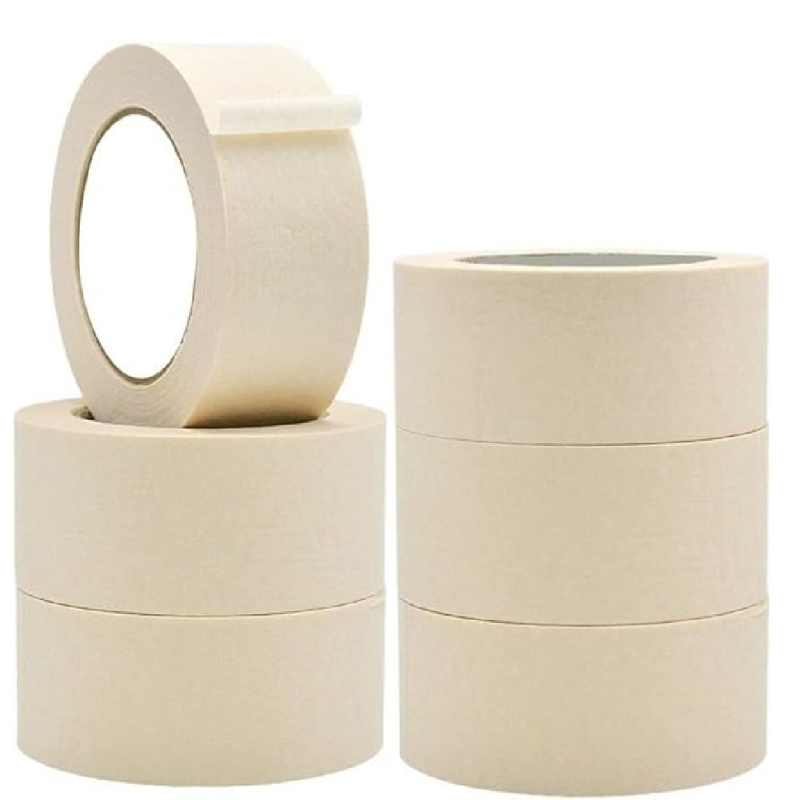
Item Code:
13375054468dBrand:
GSOMasking tape is a type of pressure-sensitive tape made with a thin and easy-to-tear paper, and an easily released pressure-sensitive adhesive. It is used mainly in painting, to mask off areas that should not be painted. The adhesive is the key element that allows it to be easily removed without leaving residue or damaging the surface, provided it is removed within a reasonable time frame.
Masking tape was invented in 1925 by Richard Drew, an employee of 3M. The invention came about when Drew observed auto-body workers struggling with removing adhesive tape that was damaging the paint on cars. He developed a tape with a light adhesive that could be cleanly removed, revolutionizing the painting industry. This innovation eventually led to the creation of the Scotch brand of tapes.
The primary use of masking tape is in painting projects. It creates sharp, clean lines between different colors or between painted and unpainted surfaces. Professional painters and DIY enthusiasts use it on walls, trim, ceilings, and furniture. Specialized painter's tape offers even cleaner lines and longer adhesion without residue.
In automotive work, masking tape protects areas like windows, trim, and chrome during painting. High-temperature masking tapes are available for baking finishes. The tape must withstand various environmental conditions without failing or leaving adhesive behind.
Crafters use masking tape for temporary holds, creating straight edges, or marking measurements. Its easy removal makes it ideal for temporary applications where permanent adhesive would be problematic. Some artists even incorporate masking tape into their artwork directly.
While not as strong as packing tape, masking tape serves well for sealing lightweight packages or attaching labels. Its easy tearability makes it convenient for quick packaging tasks without needing a dispenser.
This general-purpose tape works for most indoor applications with moderate temperature conditions. It typically has a crepe paper backing and moderate adhesion suitable for short-term use.
A specialized form of masking tape with cleaner removal and less adhesive transfer. Many painter's tapes are designed for specific surfaces or conditions, such as delicate surfaces or extended application times.
Used in automotive and industrial applications where painted surfaces undergo baking processes. These tapes withstand temperatures up to 400°F (204°C) without adhesive transfer or backing failure.
Manufacturers now produce tapes optimized for particular surfaces like fresh paint, textured walls, or delicate substrates. These specialized products minimize the risk of surface damage during removal.
For best results, apply masking tape to clean, dry surfaces. Press firmly along the edge to prevent paint bleed. Remove tape at a 45-degree angle while the paint is still slightly wet or after it has fully cured, depending on the tape instructions. Never leave masking tape on surfaces for extended periods beyond the manufacturer's recommendations, as this can make removal difficult and lead to adhesive residue.
Most masking tape paper backings are biodegradable, though the adhesive components may not be. Some manufacturers now offer more eco-friendly options with reduced environmental impact. Proper disposal follows general waste guidelines unless local regulations specify otherwise.
Masking tape remains an essential tool in painting, crafting, and various industrial applications. Its invention solved a significant problem in surface protection, and continued innovations have made it even more versatile. Understanding the different types and proper usage techniques ensures optimal results in any project requiring temporary surface protection or clean paint lines.